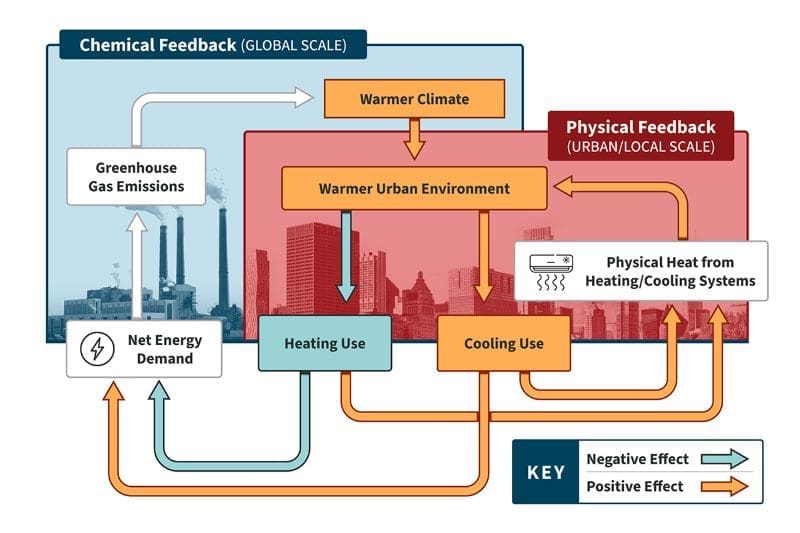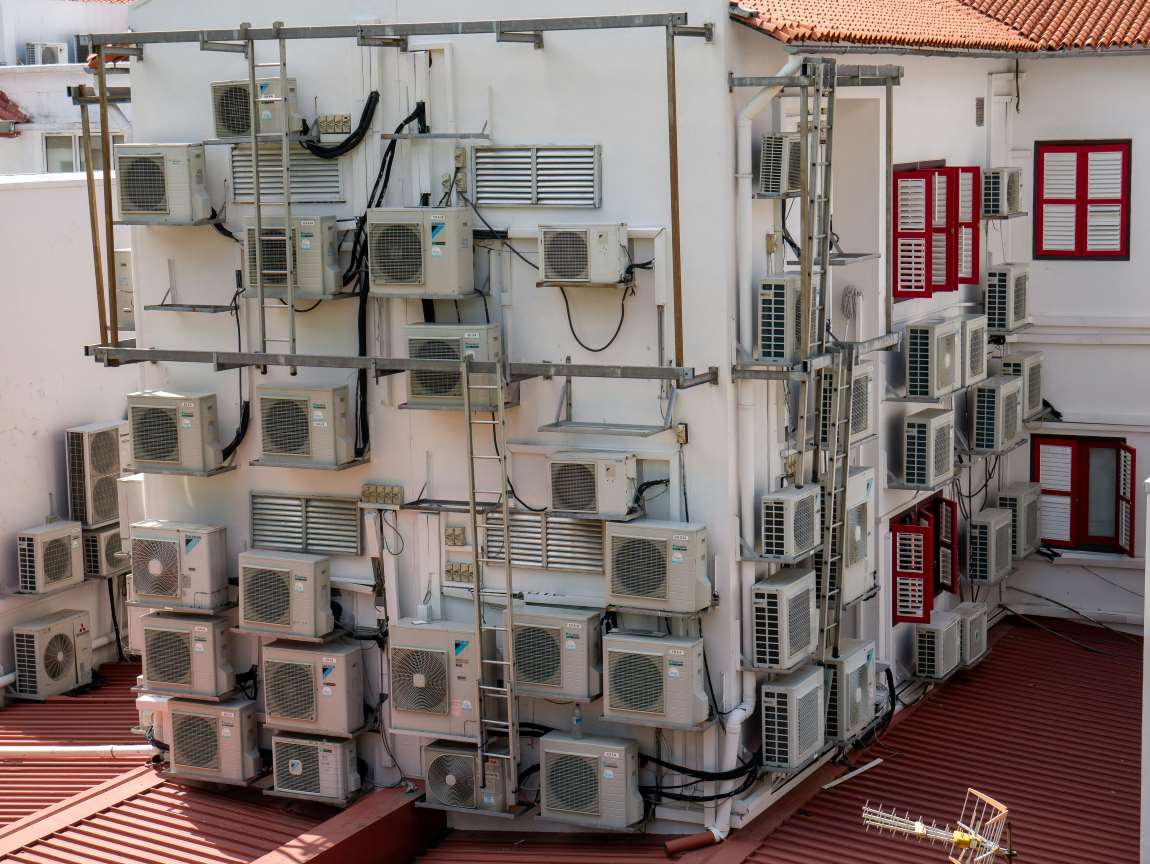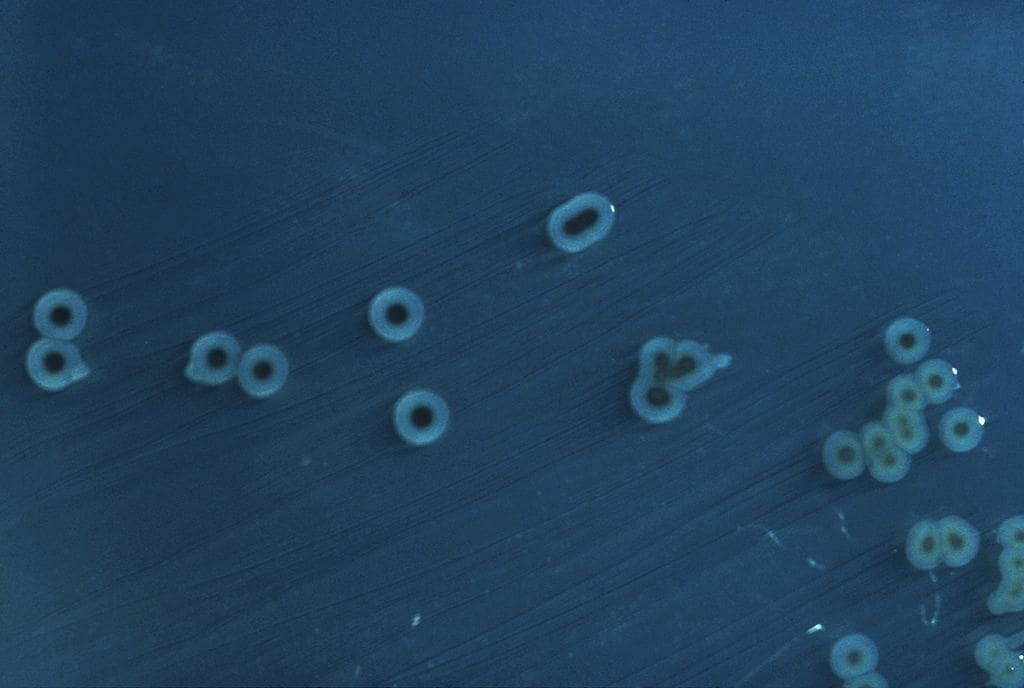A new study warns that current global energy projections may be underestimating the future impact of climate change on urban heating and cooling systems by as much as 50% by the end of the century, if greenhouse gas emissions remain high. This oversight could have serious implications for sustainable energy planning and climate policies in urban areas, researchers report.

While previous studies have focused on large-scale chemical interactions between energy use and greenhouse gas emissions, a research group led by the University of Illinois Urbana-Champaign is shedding light on the physical interactions between urban infrastructure and local climates. These localized effects, which are often neglected, can contribute to microclimates that intensify the global climate crisis.
The study, led by civil and environmental engineering professor Lei Zhao, reveals that waste heat from urban heating and cooling systems plays a critical role in shaping local climates and energy consumption.

Published in Nature Climate Change, the findings highlight how residential and commercial heating and cooling systems contribute to localized urban warming, further increasing the demand for cooling, thus creating a positive feedback loop.
“The heat generated from heating and cooling systems is a substantial part of the total heat within urban areas,” Zhao stated. “These systems generate a lot of heat that is released into the atmosphere within cities, making them hotter and further increasing the demand for indoor cooling systems, which feeds even more heat into local climates.”
This positive feedback loop complicates efforts to manage energy demand in urban areas. However, Zhao’s team also points out a potential counterbalance: warmer temperatures under climate change may reduce energy demand for heating in colder months, creating a negative feedback loop. Yet, as Zhao notes, this does not negate the overall trend.
“This process forms a negative physical feedback loop that may dampen the heating demand decrease,” Zhao said. “But it does not by any means cancel out the positive feedback loop effect. Instead, our model suggests that it could polarize the seasonal electricity demand, which poses its own set of problems for which careful planning is needed.”
To address these complexities, Zhao’s team employed a hybrid modeling framework that integrates dynamic Earth system models with machine learning. This approach allowed them to analyze global urban heating and cooling demands in the face of urban climate variability, while accounting for spatial and temporal factors like income, infrastructure, population density, and regional temperature tolerance.
Zhao emphasized the broader significance of these findings for future energy planning: “Energy projections that integrate the effects of positive and negative physical feedback loops are needed and will lay the groundwork for more comprehensive climate impact assessment, science-based policymaking and coordination on climate-sensitive energy planning.”
The research, supported by the National Science Foundation and the Institute for Sustainability, Energy, and Environment at the University of Illinois Urbana-Champaign, is part of a growing effort to refine models that can better account for variables such as humidity, building materials, and future climate mitigation strategies. These improved projections will be vital for cities aiming to adapt to the dual challenges of climate change and rising energy demand.
Journal Reference:
Li, X.’C’., Zhao, L., Qin, Y. et al. ‘Elevated urban energy risks due to climate-driven biophysical feedbacks’, Nature Climate Change (2024). DOI: 10.1038/s41558-024-02108-w
Article Source:
Press Release/Material by University of Illinois at Urbana-Champaign
Featured image credit: Alexandre Lecocq | Unsplash




